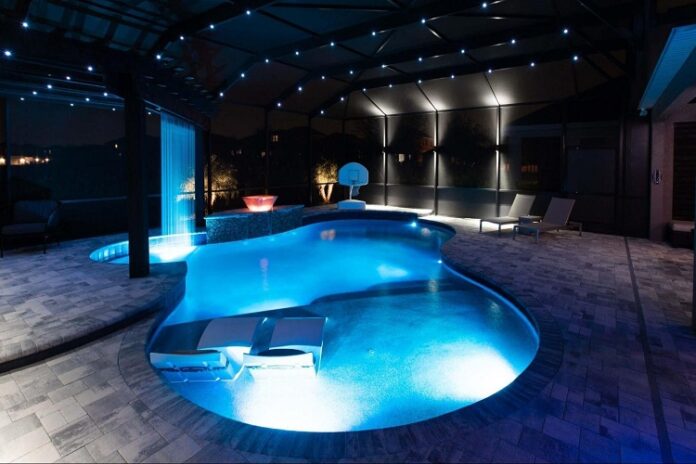Pool lights are an essential component of swimming pools, providing illumination and enhancing the overall aesthetics and safety of the pool area. However, due to their location underwater, pool lights are susceptible to water infiltration. When water enters the pool light fixture, it can lead to various issues that pose risks to both the pool’s electrical system and swimmers’ safety. Also, LD Lighting offers services in screen enclosure lighting, pool lighting, outdoor illumination, and landscape lighting systems.
In this, we will explore the effects of water infiltration on pool lights and discuss potential solutions to mitigate these risks.
- Electrical Hazards: Water infiltration into pool lights creates a direct contact between water and electricity, which can result in electrical hazards. Water is a conductor of electricity, and when it enters the light fixture, it can cause short circuits, electric shocks, or even electrocution. These hazards pose significant risks to swimmers and anyone near the pool. The presence of electricity in the water also increases the likelihood of equipment malfunctions and fire hazards. This underscores the importance of addressing water infiltration promptly.
- Fixture Damage and Malfunction: Water infiltration can damage the pool light fixture itself. Moisture can corrode electrical components, such as wires, connectors, and sockets, leading to malfunctions or complete light failure. Corrosion affects the light’s performance but also increases the risk of electrical hazards. Additionally, water infiltration may damage the bulb, lens, or other parts of the fixture, compromising its functionality and reducing the light’s lifespan.
- Diminished Illumination: When water infiltrates the pool light, it hinders light distribution, resulting in diminished illumination. Water inside the fixture may scatter or block the light emitted by the bulb, reducing the overall brightness and visibility of the pool. Diminished illumination can compromise swimmer safety, as it becomes difficult to see pool depth, obstacles, or other swimmers underwater. This can increase the risk of accidents, especially during evening or night-time swimming sessions.
- Increased Maintenance and Repair Costs: Water infiltration into pool lights often leads to increased maintenance and repair costs. Once water has entered the fixture, it is necessary to promptly address the issue to prevent further damage and ensure the electrical system’s safety. This typically involves draining the fixture, drying it thoroughly, and inspecting and repairing any damaged components.
Solutions to Mitigate Water Infiltration:
- Regular Inspection and Maintenance: Regular inspection and maintenance of pool lights are crucial in identifying and addressing potential water infiltration issues. Professional pool technicians should inspect light fixtures periodically, checking for signs of moisture, corrosion, or damage. They can also perform necessary repairs or replacements to ensure lights function properly and safely.
- Proper Installation and Sealing: Proper installation and sealing of pool lights is vital to preventing water infiltration. During installation, it is essential to follow manufacturer guidelines and use appropriate sealing techniques. This is to create a watertight seal between the fixture and the pool structure. This can help minimize water penetration risk and prolong the light’s lifespan.
Table of Contents
Conclusion:
Waterproof fixtures are constructed with specialized materials and sealing techniques to ensure long-term durability and minimize electrical hazards.


















